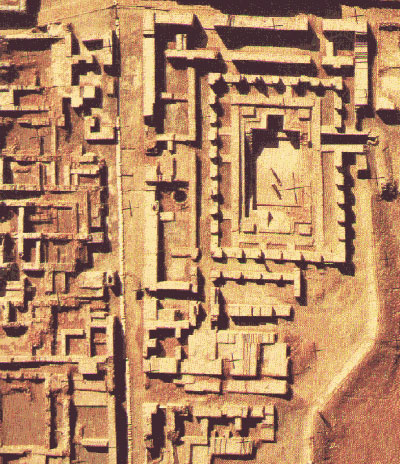A1Kaid
PDF THINK TANK: ANALYST

- Joined
- Oct 20, 2008
- Messages
- 9,667
- Reaction score
- 8
- Country
- Location
The Indus Valley civilization is not well as known as the ancient Mesopotamian civilizations as Sumeria, Babylon, Assyrians, or ancient Egypt, and ancient Greece. Archaeologist and Architectural historians have had a much longer time to study the aforementioned civilizations as their sites have been well excavated and studied by scholars. The Indus Valley civilization has been known by modern scholars for roughly 140 years, it is a field that has growing scholarly activity and more is being learned.
One of the great hallmarks of the Indus Valley civilization (known to be at least a 5,000 year old civilization) is their architectural achievements and urban planning. Though unlike other ancient civilizations like the Egyptians and the Sumerians no Pyramids or Ziggurats have been found in the Indus Valley civilization sites such as Mohenjo-Daro or Harappa, and Taxila. However, other great engineering achievements such as irrigation, urban planning, streets, and public facilities are argued to have been more advance than other ancient civilizations.
Perhaps, the Indus Valley Civilization did build large megalithic structures remaining to be seen, that is the work of archaeologist.
This thread is for the sake of learning Indus Valley civilization's architecture, a keystone of their civilization and how they lived.
One of the great hallmarks of the Indus Valley civilization (known to be at least a 5,000 year old civilization) is their architectural achievements and urban planning. Though unlike other ancient civilizations like the Egyptians and the Sumerians no Pyramids or Ziggurats have been found in the Indus Valley civilization sites such as Mohenjo-Daro or Harappa, and Taxila. However, other great engineering achievements such as irrigation, urban planning, streets, and public facilities are argued to have been more advance than other ancient civilizations.
Perhaps, the Indus Valley Civilization did build large megalithic structures remaining to be seen, that is the work of archaeologist.
This thread is for the sake of learning Indus Valley civilization's architecture, a keystone of their civilization and how they lived.







